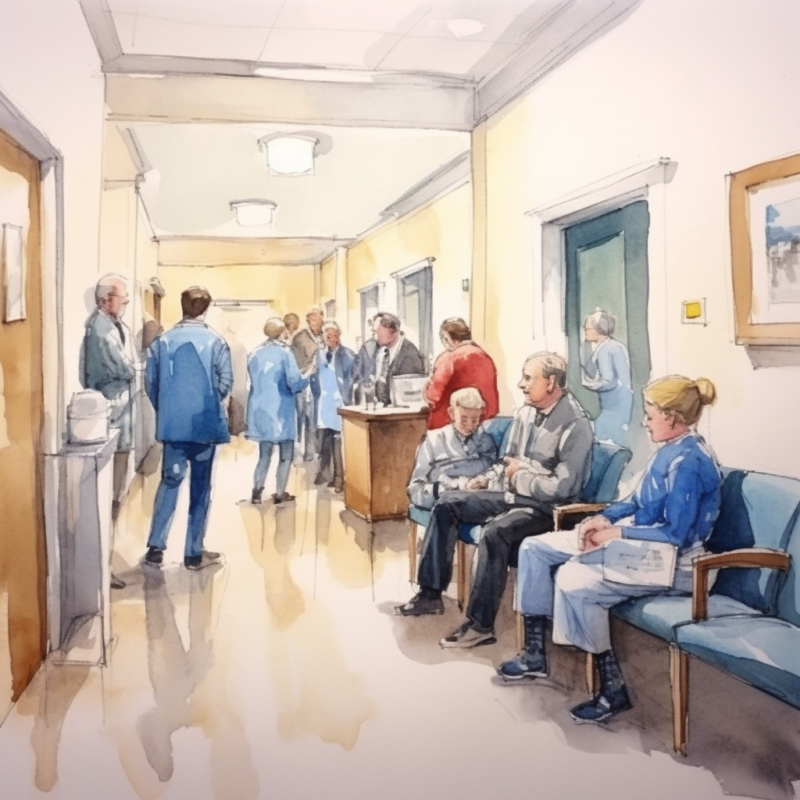
This post is the third of a three part series on the state of primary care by two of CHPI’s founding trustees: practicing GP Jonathon Tomlinson and academic and author Colin Leys. This piece is authored by Colin, and here you can find the first ‘Threats and Opportunuties’ and the second ‘The GP Shortage’
In addition to the shortage of GPs and their inverse distribution in relation to need, discussed in a previous blog, several responses to the crisis have made it worse, or have at least made solutions more difficult to envisage.
One is the substitution of less qualified staff for GPs. In 2019 the government began funding what is to be an eventual total of 26,000 new posts for less qualified staff in primary care – pharmacists, nurses, ‘physician assistants’, and paramedics – equivalent to 20 for each of the 1,250 Primary Care Networks (PCNs) into which all but a handful of general practices in England have now been grouped. This was done in the name of ‘integrated care’, which proponents of the new posts declared was fundamental to the future of general practice: ‘new forms of organisation that enable practices to work together and with other providers to put in place integrated services’.
The introduction of the new posts was haphazardly handled. PCNs themselves were still just being formed, and few had a clear idea of how the new personnel should fit into the framework of practices and other community level services. In any case the new policy was not aimed at rectifying the problem of inverse care, and the distribution of the new posts made a negligible difference to it. Many GPs felt that many of the new personnel, such as Physician Assistants, detracted from patient care instead of enhancing it, since they can do only a limited range of tasks, and need supervision. The loosely defined vision of integrated care seemed driven by a managerial faith in scale, and looked like yet another step away from the provision of continuity of care, or relational care, which was being eroded by the shortage of GPs.
A second response to the crisis was the development of new models of general practice. One was ‘super-practices’, effectively large companies or partnerships operating at numerous sites. Two of the largest of these in 2022 are Operose, a for-profit company owned by the US transnational Centene, with 600,000 patients registered at its 70 practices in England; and Modality, a Birmingham-based partnership with 43 practices and more than 400,000 patients. The business model of these organisations is based on the idea that economies of scale, and a sophisticated management team, can raise profits and/or raise the performance of all the practices involved. In the case of Operose an investigation by the BBC reported that Operose employed six times as many physician associates as the NHS average and operated with half the number of GPs, leading to a review by the Care Quality Commission.
A third response, encouraged by the government, is GP At Hand, a primarily online practice with just a handful of clinics, mainly in London, which caters overwhelmingly to young, healthy patients (85% are aged between 20 and 39). In 2022 GP At Hand had grown in less than ten years from nothing to over 100,000 patients. This has been disruptive, partly due to being allowed to register patients from all over England, while just one NHS commissioning body, Hammersmith and Fulham CCG, had to pay its rapidly rising bill, and had to be rescued by NHS England with emergency funding. A more serious disruption is that whenever young patients move from a standard practice to GP At Hand their NHS funding goes with them, leaving their former practice less well able to look after the remaining, more costly, patients.
Another model which combines a primarily online service with standard general practices is AT Group Digital Hub, another company owned by Centene, which uses ‘allied health professionals’ to triage the calls from the 420,000 patients in the practices served by the hub.
Whatever the next steps for general practice are, these big new players will have to be reckoned with. General practices are no longer only small business partnerships. This is very important when it comes to the key issue of continuity of care, or ‘relational’ care, for which the NHS was once internationally famous. The evidence is compelling that continuity of care – ‘relational’, personal care by a GP who knows the patient – not only leads to better health outcomes for patients, reducing hospital attendances and preventing deaths, but also saves money for the health system as a whole. As Sir Denis Pereira Gray and Professor Philip Evans remark, in their submission to the Health Select Committee: ‘This research may interest HM Treasury as interventions which both improve quality and lower costs are rare.’
But the tendency of government policy has been to make continuity of care less and less achievable. Besides not training enough GPs, or making the conditions of general practice rewarding enough for GPs to be keen to work full time in it, the tendency of policy has been to substitute ‘allied health professionals’, such as physician assistants, for GPs, and link them digitally to a smaller GP workforce, on the lines adopted by corporations such as Operose. The new posts created for PCNs are in line with this, as is the enthusiasm of successive ministers for telemedicine. Why this ‘transactional’ conception of health care should have been adopted in face of the evidence that it is less good for patients, and costs more, needs to be better understood if good care is not to be permanently lost.
Support Our Work
CHPI is the only truly independent health think-tank dedicated to the founding principles of the NHS. To continue our work keeping the public interest at the centre of health and social care policy, we need your help.
Please support CHPI so we can continue to impact the health policy debate.
